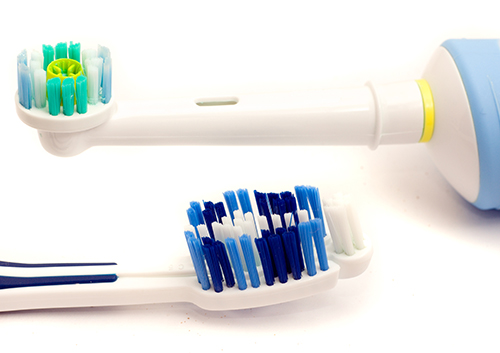How Sedation Dentistry Can Help You Overcome Dental Anxiety
July 5th, 2023

Sometimes people feel a tiny bit nervous when they sit in the dental chair. And sometimes it’s more than a tiny bit. If your anxiety over visiting the office leads you to skip regular checkups and cleanings, or, worse, if you would rather suffer tooth or gum pain than give us a call—give our Fairview Heights, IL office a call! Sedation dentistry might be just the procedure you need to make dental anxiety a thing of the past.
Drs. Rottschalk, Acker, and Froidcoeur and our team are trained to administer sedation and to monitor your responses throughout. And we want you to have all the information you need to decide on any dental treatment, including sedation. We will tell you of any risks, and describe the procedure in detail. If you have any health conditions or take any medications that might interfere with sedation, we can discuss your options with you and your doctor to make sure you are a good candidate. We will explain any preparations you should take, and let you know if there is a window of recovery time needed in our office while the sedation wears off.
Don’t let yourself suffer dental pain because you suffer from dental anxiety! Please call us to discuss sedation. We are trained to administer the treatment you choose gently and safely. Above all, we want to help you keep your smile the heathiest it can be, and that only happens when you have regular dental care. Let us work with you to make that care as comfortable and stress-free as possible.
Can Your Dentist Tell If You’re Left-Handed?
June 28th, 2023

Sherlock Holmes, that most famous of fictional detectives, observed clues, analyzed them, and used his powers of deduction to arrive at the solution to his cases.
Drs. Rottschalk, Acker, and Froidcoeur and our team are skilled in deduction as well! By examining your teeth and gums during your regular checkup, important clues can be discovered about your dental health—and perhaps your overall health as well. What might be deduced when you come in for an exam?
- You Haven’t Been Flossing
Even with some last-minute catchup flossing, it’s not hard to tell if you’ve been regularly skipping the flossing portion of your daily dental care. Plaque that your toothbrush just can’t reach on its own will be noticeable between your teeth and around the gum line. Your gums might be inflamed, swollen or bleeding—early signs of the gum disease plaque causes when it’s not removed with careful flossing.
These symptoms could arise because you’re neglecting to floss at least once a day, or it could be that your flossing skills could simply use some fine-tuning. A refresher in flossing technique takes no time at all. Or, you might discuss whether a water flosser would be a good investment for healthier teeth and gums if, for any reason, you have difficulty flossing effectively.
- You Haven’t Been Sleeping Well
Even if your roommate or partner hasn’t told you that your teeth and jaws have been grinding away while you were not-so-soundly asleep, your dentist might be able to. Shorter, flattened teeth are a common symptom of bruxism, or tooth grinding. Your exam might reveal cracked enamel or broken cusps caused by the force you’re placing on them at night. This condition can also lead to larger jaw muscles and jaw pain.
Since these symptoms are also caused by sleep apnea, it’s a very good idea to find out what’s causing this dental stress. Treatments are available to make your sleep safer for your teeth and jaws—and more restful and healthier for you!
- You Should Talk to Your Doctor
Conditions that seem to have nothing to do with your oral health can cause dental symptoms, alerting your dentist to a medical condition which you might not be aware of. Pale gums or a swollen tongue could be symptoms of anemia. Erosion on the inside of the teeth can be caused by GERD, or gastroesophageal reflux disease. Vitamin and mineral deficiencies can lead to ulcers, loose teeth, and gum disease.
If Drs. Rottschalk, Acker, and Froidcoeur and our team suggest that you make an appointment with your doctor to find the medical cause of your dental symptoms, it’s essential to follow up.
- Are You Left-Handed?
So, getting back to our original question, can your dentist deduce that you’re left-handed?
Probably not! It’s been suggested that left-handed people brush their teeth more firmly on the left side, and right-handed people brush harder on the right. And it’s also been suggested that left-handers don’t brush the left side of the mouth as thoroughly, while right-handers neglect their dominant side.
But Drs. Rottschalk, Acker, and Froidcoeur can still tell you some important facts about your hand-brush coordination just by observing the state of your enamel. If you’re brushing too firmly, your tooth surfaces could show erosion and wear. A soft-bristled brush and a lighter hand will get your teeth just as clean without the abrasion.
If you’re having trouble reaching areas because of dexterity issues, Drs. Rottschalk, Acker, and Froidcoeur can point out the areas where plaque buildup reveals the spots you need to concentrate on. An electric toothbrush might be just the answer to making all the surfaces of your teeth equally accessible.
A dentist is an expert in observing, analyzing, and solving dental problems. When you keep to a regular schedule of exams and cleanings at our Fairview Heights, IL dental office, you’ll benefit from that expertise to discover oral health issues before they become more serious. That’s an easy and elegant solution to maintaining your dental health. In fact, it’s elementary!
Dental-Healthy Snacks for Your School-Aged Child
June 28th, 2023

Kids are constantly active and constantly growing. No wonder they’re constantly hungry! When it’s time for a snack, here are some tips to make between meal treats timely, tasty, and tooth-friendly.
Keep snacks to a minimum
Every time we eat, we’re also providing food for the bacteria in our mouths. Bacteria use sugars to produce acids. These acids weaken our enamel and can lead to cavities. Luckily, we have a natural way of protecting our teeth. Saliva washes away food particles and bacteria, and even provides substances that strengthen our teeth in the hours between meals.
When we eat throughout the day, there is no chance for this recovery period to take place. Small children aren’t usually able to get through the day without a few snack periods, which is perfectly normal. Just try to make sure that snacking doesn’t become all-day grazing!
Avoid foods that contain sugar and carbohydrates at snack time
We know that sugar leads to an increased chance of cavities because bacteria convert this sugar into acids that damage our enamel. But carbohydrates should also be in the no-snack zone. Why? Because carbohydrates break down into sugar very quickly. So while you wouldn’t offer your child a daily mid-afternoon snack of sodas and chocolate bars, those muffins, doughnuts, chips, and bagels should be on the “special treat” list as well.
Dental-healthy snacks
Luckily, we are left with many healthy and convenient choices when your child needs a nibble.
- Crunchy, crisp fresh fruits and vegetables provide vitamins as well as a gentle scrubbing action to help clean teeth. They are also rich in water, which helps us produce the saliva that naturally washes away food particles and bacteria.
- Low-fat yogurts and cheeses provide essential calcium for strong teeth and the vitamin D that helps us absorb calcium.
- Whole grain breads, cereals, and crackers are healthier than products made only with white flour because they retain valuable vitamins and minerals that have been removed from refined grains.
- Lean meats, peas, legumes, and eggs provide protein that helps build connective tissue and maintain tooth structure.
- Water helps stimulate saliva production and provides cavity-fighting fluoride. Win/win!
You are constantly looking for ways to make your children’s lives better. Mix and match any of these foods for a snack that’s not only good for their teeth, but rich in the proteins, vitamins, and minerals needed to keep them active and growing throughout their school years. If you have questions about your child’s dietary needs, feel free to ask Drs. Rottschalk, Acker, and Froidcoeur at our Fairview Heights, IL office.
Electric or Manual Toothbrush: Why It Does (and Doesn't) Matter
June 22nd, 2023

You live in the golden age of toothbrushes. Until a few decades people used twigs or brushes made from animal hair to clean their teeth: not very soft and none too effective.
Now, you have a choice of manual brushes with soft, medium, or hard bristles. Or you might choose to go with an electric toothbrush instead.
Have you ever wondered whether manual or electric brushes provide better cleaning? Actually, they both do the job. The key is to brush and floss every day, regardless of the kind of brush you prefer.
At our Fairview Heights, IL office, we like to say the best brush is the one you'll use. So if you prefer manual, go for it. If you prefer electric, turn it on.
Both types have their advantages but both types will get the job done as far as removing plaque.
Electric Toothbrushes
- Provide power rotation that helps loosen plaque
- Are great for people with limited dexterity due to arthritis or other problems
- Are popular with kids who think the electric brushes are more fun to use
- Can come with variable speeds to help reduce pressure on sensitive teeth and gums
Manual Toothbrushes
- Can help brushers feel they have more control over the brushing process
- Allow brushers to respond to twinges and reduce the pressure applied to sensitive teeth and gums
- Are more convenient for packing when traveling
- Manual brushes are cheaper and easier to replace than the electric versions.
In many ways, the golden age is just beginning. There are already phone apps available to remind you to brush and floss. New apps can play two minutes worth of music while you brush, help you compare the brightness of your smile or help explain dental procedures. Maybe someday we’ll even have programs that examine your teeth after brushing and identify spots you might have missed.





